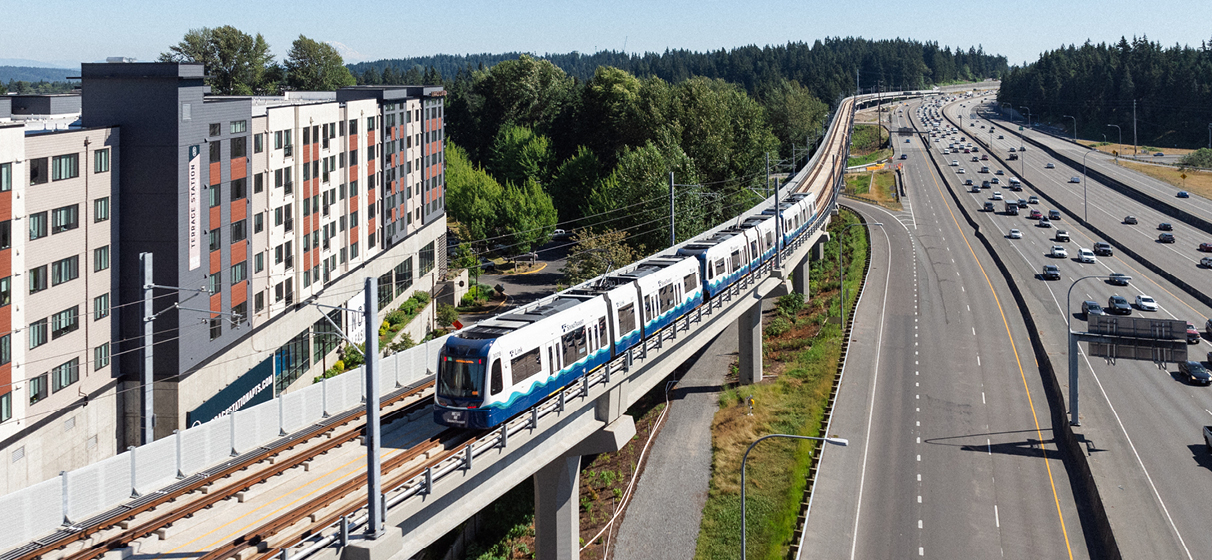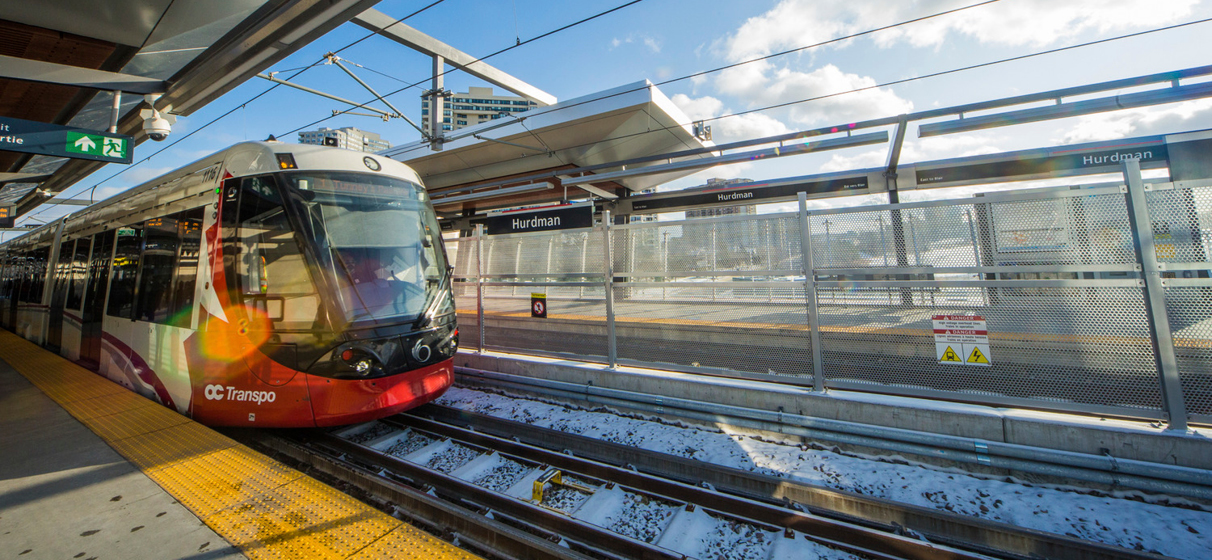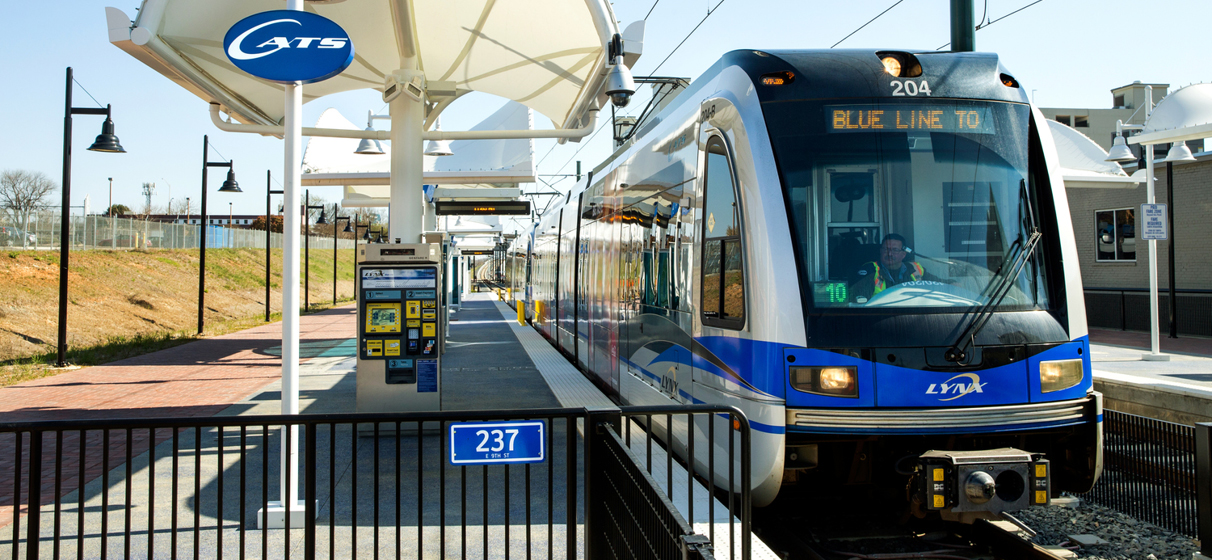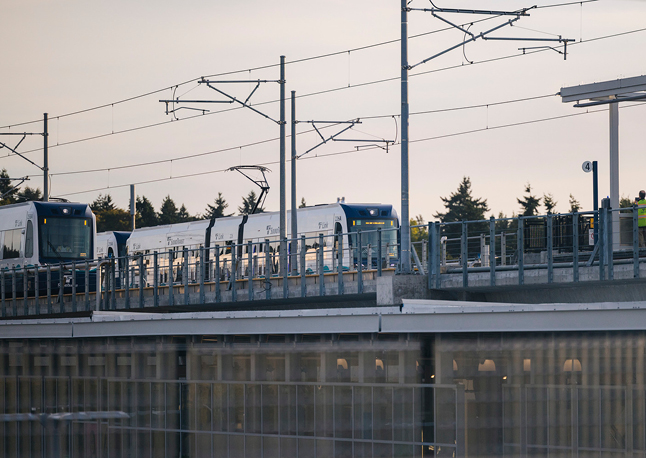Central to STV’s decades of success in designing and delivering new and expanded light rail transit (LRT) systems across North America is the unique expertise of our systems and vehicles teams – which includes nationally recognized leaders in traction power, overhead contact systems, train control, communication systems, security and vehicle integration.
Whether STV is providing engineering design or construction/program management services for systems integration, or as a delivery partner, our team takes a disciplined approach for each project and client. We understand every aspect of how LRT systems are planned, designed, constructed, integrated and tested, and understand the interactions with the surrounding community. That includes expert knowledge of how they are designed, built and operated over the lifespan of a system.
Some of our more recent LRT systems projects include serving as the exclusive designer and integration manager for all systems components for the ION Light Rail system in Waterloo, Ontario, Canada, and providing construction manager services, in joint venture with Mott MacDonald, for the systems components of Sound Transit’s Northgate Link, East Link and Lynnwood Link extensions in Seattle, WA.
ION was designed to meet an aggressive growth forecast in the region, with a projected increase of more than 80,000 jobs and 200,000 residents in the Waterloo, Kitchener and Cambridge “Technology Triangle” by 2031.To move quickly, the system was built and financed through a public-private partnership between the Region of Waterloo and GrandLinq, a consortium of investors, developers, engineering consultants and contracts that are now operating and maintaining the system.
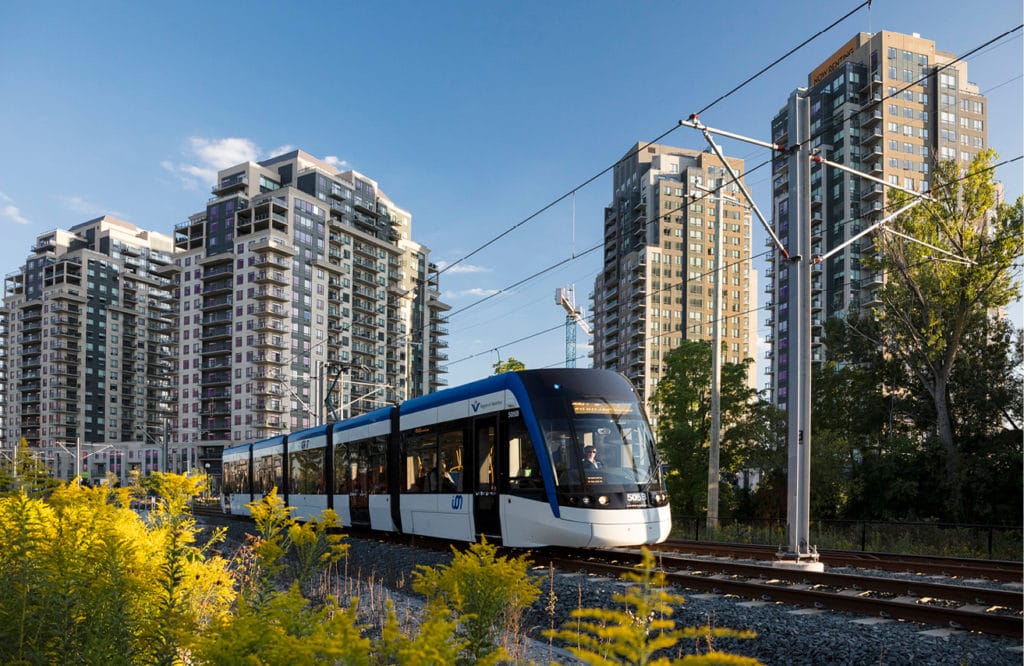
Given the urgency of the task at hand, we approached this project with the flexibility of collaborating with all of our partners and stakeholders to arrive at the best solutions that would serve the region well over the long term, rather than inflexibly conforming to a specific solution that may have worked on past projects in other communities.
To best support the aggressive ridership forecasts and associated train capacity requirements, our team performed load-flow simulation studies to define the traction power system type and configuration. This led to us developing the system’s overhead contact system, which involved calculating tension, sag and factor-of-safety for conductors; structural leadings on overhead wires; and proper clearances of catenary profiles underneath existing structures along the street where the LRT system was running. To reduce procurement and long-term operation and maintenance costs, our team designed all mainline substations to be the same size and type.
For ION’s rail vehicles, supplied by the Region of Wateloo to Grandlinq without onboard systems components, STV led the design and implementation of the integration of the onboard system components necessary to bridge an existing vehicle design with the LRT system design. This included a radio and Automatic Vehicle Location communication system that integrated with the existing communications system network used in the region, and Automatic Train Protection, Train to Wayside Communication, and Traffic Signal Prioritization technologies collaboratively selected by GrandLinq to meet the system requirements. STV also provided support as the interface between the designers of the alignment, systems, and maintenance facilities, providing critical input that shaped the design of the LRT.
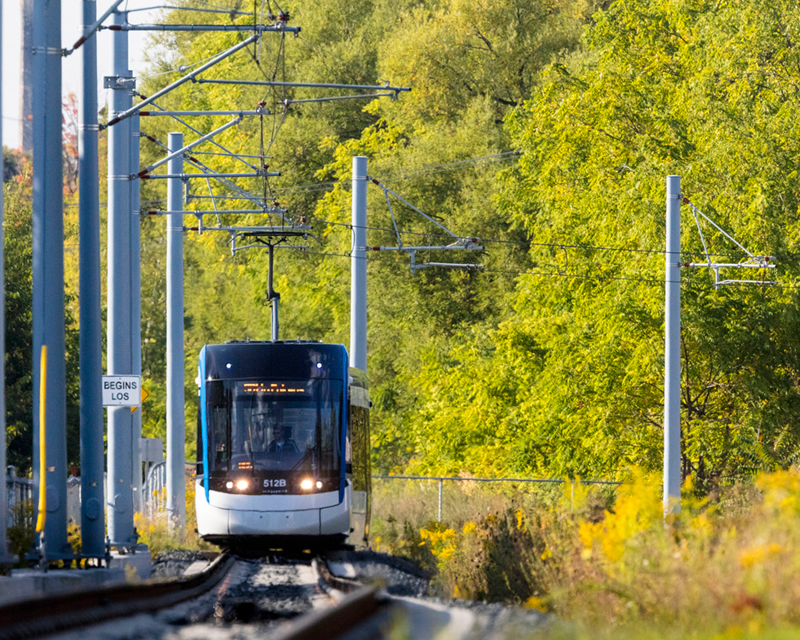
Demonstrating the effectiveness of STV’s approach and ability to provide value in all areas of LRT design, construction and operation, under separate contracts with the construction contractor, our team led the development of a systems safety and security plan as well as reliability, availability, and maintainability prediction, coordinating solutions with the client, lead designer, construction contractor and operations and maintenance partner.
In a show of how our systems team can provide expertise that goes beyond traditional design services, STV also conducted several crucial power studies/reports that allowed ION to go into revenue service and perform maintenance activities safely. A Power Quality Study was done to alleviate Waterloo North Hydro’s concerns about the electrical impact of the light rail system on other electrical customers along the new rail alignment. The study examined the voltage flicker – simply put, this is a type of voltage fluctuation that causes rapid, visible changes in the brightness of lights – and harmonic distortion produced by the LRT’s traction power system. The report and associated calculations provided the needed assurance to WNH to allow connection of the light rail to the utility grid knowing that the community along the alignment would not experience issues with their power.
For another study, we documented the calculation of arc-flash incident energy, which is the amount of thermal energy generated during an electrical arc event at a specific distance from equipment, for the LRT’s OCS to determine the level of personal protection that would be required when working 18 inches from the overhead power system. This study helped to enhance the personal safety of any maintenance or operations work along the line.
In Seattle, our team provided technical team leadership for the construction of infrastructure and system components for Sound Transit’s Northgate, East Link extensions and the recently opened Lynnwood Link extension – key components of a systemwide expansion. Given the complexity of the LRT systems design, this program required close coordination of work and access between the civil contractors and the systems contractors.
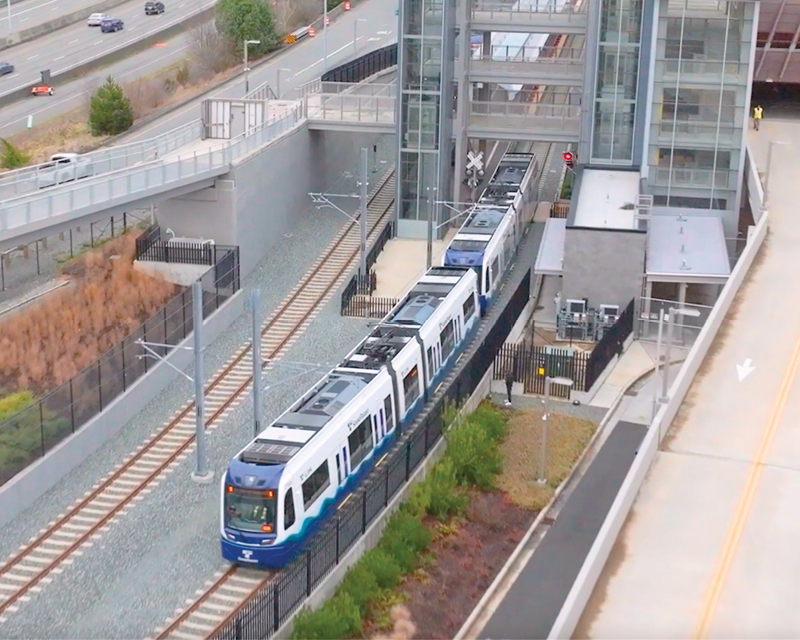
Many members of our team have a background in working for systems suppliers, which provides insight on how every piece of equipment is designed, integrated and how it is intended to work to meet system requirements. We performed technical reviews of submittals and developed cost estimates for changes related to the power, access control, trackway intrusion detection, video surveillance, visual message sign, telephone, SCADA, cable transmission, radio, automation and stray current and corrosion control systems. Additionally, we reviewed overhead contact system equipment and performed field inspections to verify that the installation was in accordance with the systems layouts and shop drawings.
Our success with Sound Transit is owed to our team’s inherent understanding of every detail of how an entire LRT system functions to meet the critical transportation need for the community it serves. That’s also why we continue to win new work with long-standing clients like the Tri-County Metropolitan Transportation District of Oregon to spearhead the replacement of 12 traction power substations along the district’s Blue Line. We know how things are built and can forecast the specific challenges ahead, while also demonstrating an ability to reduce risk for the client. We also can see from ground zero the needs of the end user so we can best align what the initial plan is asking for with what will work best for the system for generations to come.
